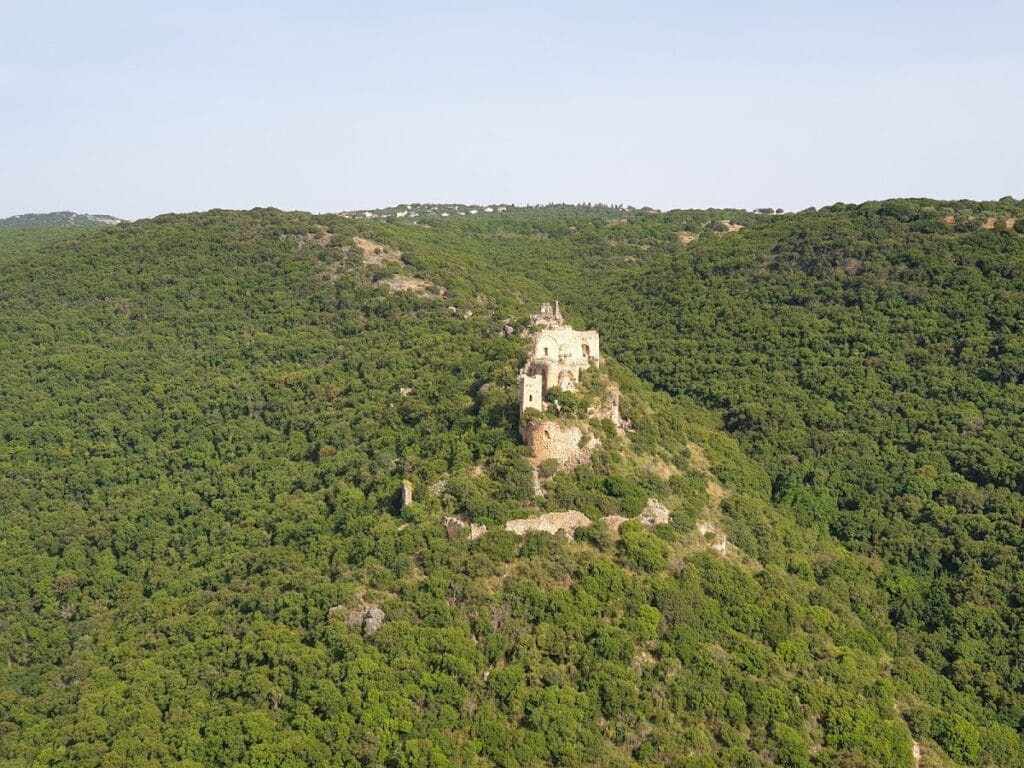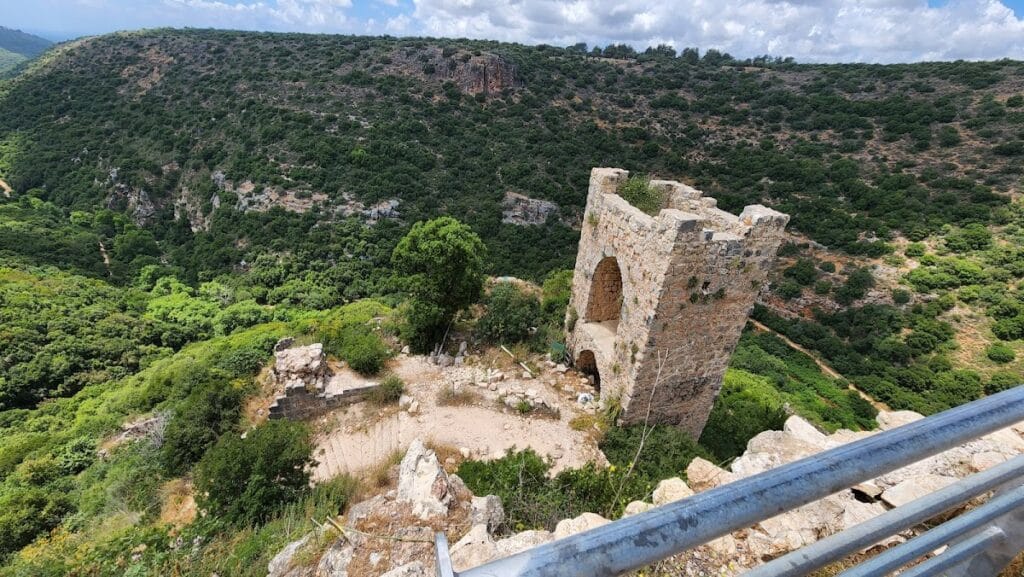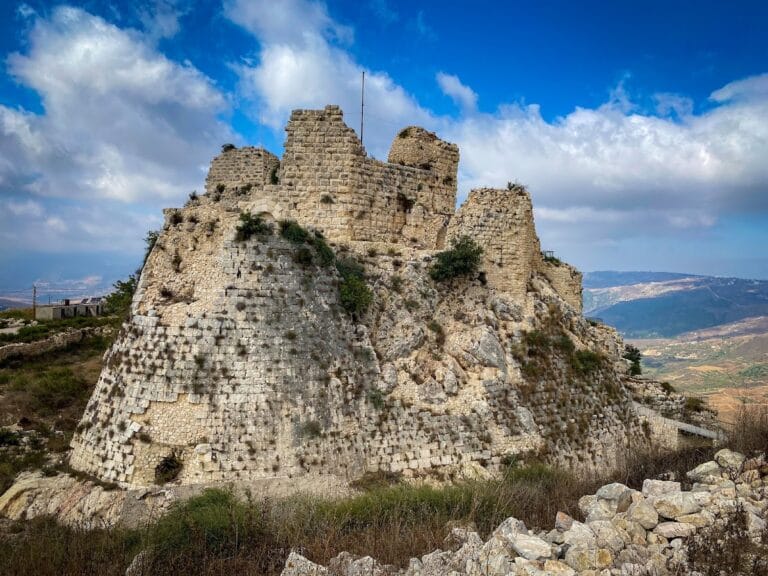Montfort Castle: A Crusader Stronghold of the Teutonic Order in Israel
Visitor Information
Google Rating: 4.7
Popularity: Medium
Google Maps: View on Google Maps
Official Website: www.parks.org.il
Country: Israel
Civilization: Crusader
Remains: Military
History
Montfort Castle is situated in the municipality of Eilon in Israel. This site was originally established by Crusaders during the medieval period and is known for its role as a stronghold of the Teutonic Order in the Holy Land.
The earliest phase at Montfort began in the mid-12th century when the French noble family de Milly constructed a fortified agricultural estate on a narrow, elevated ridge. This estate formed part of a broader network of villages and farms in the Galilee region, with the family’s main seat located at Mi’ilya. In 1179, ownership passed to Joscelin de Courtenay through his marriage to Agnes de Milly. Over time, the estate was fortified more substantially, reflecting its increasing importance.
Following the significant defeat of the Crusader forces at the Battle of Hattin in 1187, Montfort was captured by Muslim forces under Saladin. Due to its inland location, away from major roads and borders, the fortress was not deemed critical militarily and its strategic value remained limited. After the Third Crusade (1189–1192), Crusaders managed to reclaim the area, enabling the de Milly family to regain control of Montfort.
In 1220, the estate was sold to the Teutonic Order, a military and religious group active during the Crusades. Facing conflicts with rival orders like the Templars and Hospitallers based in Acre, the Teutonic Knights moved their headquarters, including important documents and treasure, to Montfort. Through support from the Pope and donations from pilgrims, they transformed what had been a fortified farmstead into a full-fledged castle by 1229. For over forty years, from around 1230 to 1271, Montfort functioned as the main fortress for the Teutonic Order in the region.
In 1266, the castle withstood a siege by Mamluk Sultan Baibars, who ruled Egypt and sought to expel Crusader forces. However, in 1271 Baibars returned with greater force and military engineers, effectively breaching the southern wall after a weeklong attack. Following further combat within the castle keep, the defenders surrendered with the assurance they could depart with their belongings. To prevent the castle’s reuse as a military base, Baibars ordered its destruction, leaving only the heavily fortified keep intact.
After the final fall of key Crusader cities, the Teutonic Order relocated its operations to Venice, ending Montfort’s role in their presence in the Holy Land. Archaeological interest grew in the site beginning in 1926, with excavations carried out intermittently since then. More recent research, notably since 2011, has helped clarify many aspects of the castle’s history and function.
Remains
Montfort Castle occupies a narrow, steep ridge about 30 meters wide, overlooking the southern bank of Nahal Kziv. This “spur castle” was constructed to maximize natural defenses, with man-made fortifications focused primarily on the eastern side where the ridge connected to higher terrain. Here, two dry moats and a notable D-shaped stone tower known as the keep formed the core of the stronghold. Built from large roughly finished stones, the keep served as both the final defensive refuge and the lord’s residence in peaceful times. It featured elongated windows and robust construction that allowed it to survive the castle’s partial destruction.
Spanning the ridge between the eastern keep and a robust three-story administrative building to the west, the castle’s main residential and official spaces were arranged linearly. The western building included vaulted halls on the ground floor, used for administrative affairs; a second-floor ceremonial hall; and private living quarters on the third floor. Beyond this structure lay a smaller vaulted room now largely in ruins, its precise function unclear.
The primary entrance to the castle was through a three-story gate tower well preserved today. The gate led into a narrow enclosed courtyard called a zwinger, designed as a defensive killing ground, formed by a curved wall linking to the castle’s western complex. The entire upper ward was encircled by a defensive wall, with remains also found extending down the northern and western slopes. This lower outer ward, located about 50 meters below the main castle, housed auxiliary buildings such as stables.
The Teutonic Knights undertook significant enhancements to the site. They excavated a deep moat on the eastern side to supplement natural barriers and reinforced slopes with stone retaining walls to create more stable defenses. Inside the keep, the lower level contained diverse functional spaces: workshops for weapon production, a kitchen, a large dining hall supported by two rows of octagonal columns, a wine press likely used for the castle’s supplies, and a small hall. Below the refectory (dining hall) were vaults thought to store supplies and possibly the Order’s treasures.
Adjacent to the administrative area was a church, though only the southern portion remains today. From this church, stairs provided access down to the castle’s refectory, indicating a close spatial relationship between religious and daily life areas.
Further down the slopes, near the banks of Nahal Kziv, stands a well-preserved three-story building that functioned as a water-powered mill during the Teutonic period. This structure may also have served as a guesthouse or hospital. Nearby, a dam was constructed to gather water for both irrigation and mill operation, demonstrating sophisticated water management integrated with the castle’s economy.
The southern side of Montfort featured a stone protective wall with a deep ditch in front, forming the first defensive barrier against attack. After the final siege by the Mamluks, much of the castle was deliberately destroyed, leaving only the keep largely intact.
Excavations have unearthed a range of artifacts including weapons, fragments of armor, portions of stained glass from the castle’s church, and heraldic items. These finds illuminate both the military activities and ceremonial functions that characterized Montfort during its occupation by the Teutonic Knights.







